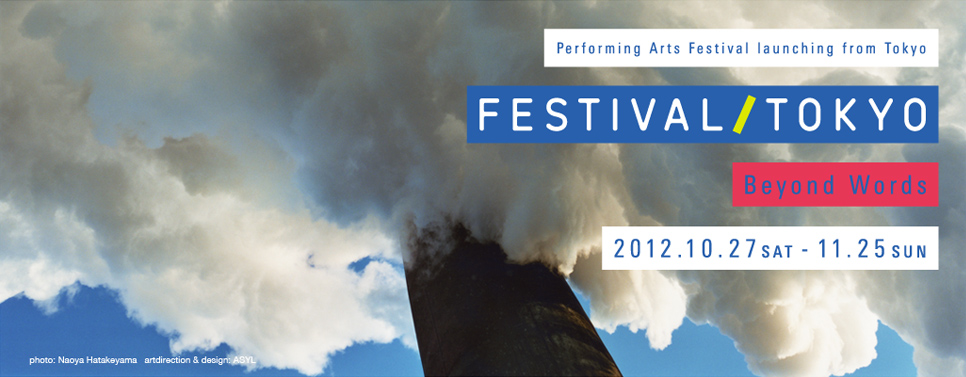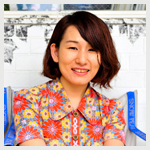Beyond Words
A year and a half of “post-disaster” time has flowed by. What has changed since that day? And what hasnʼt? The ground continues to shake; radiation continues to leak out. There seems to be no destination for all the rubble. Great numbers of people are bereft of words; silence is imposed upon them. And now our “here and now” also continues to shake along with the earth. On the one hand we seem numb with unease, and yet our daily, detached Tokyo lives persist. Words are overflowing in gargantuan mounds: journalistic words reporting on the current situation of the disaster zones; words condemning the nuclear accident and denouncing the re-starting of the plants; words of the victims and words representing them; words and slogans in support and encouragement of the disaster zones; catchphrases from the advertising and travel campaigns capitalizing on this; and comments and murmurs from the people caught up in it all... The words amidst the clamour of the city – and in the infinitely ballooning online sphere – are proliferating everywhere, eclipsing our senses.
Supposing the words of theatre are within all this, what kind of thing would they be? Where would they emanate from – and to where would they be addressed? From ancient times theatre has been an art form that mediates through language, but what now can language say today using the medium of theatre, in an era deluged by diverse words and diverse media? This coming F/T will be continuing the work of re-grasping the uncertain present, passing through a state of language loss facing a reality that cannot be voiced, with a few words nonetheless boldly attempting to radiate out, inclining our ears to the voices that cannot be heard.
As one part of this experiment, F/T will stage a special series of 3 plays by the Austrian Nobel laureate and playwright, Elfriede Jelinek. Her “Kein Licht.”, penned after 3.11, is a cascade of urgent words emanating from the earthquake, tsunami and nuclear reactor accident. The infinitely proliferating light and radiation, and the voiceless voices of the dead: from this uncontrollable flood of words Motoi Miura (Chiten) and musician Masahiro Miwa will provide voices and sounds, attempting to reflect on our here and now. Following on from “Kein Licht.” is “Kein Licht II”, released on March 12, 2012, an epilogue that stamps a large question mark on the continually forgotten situation in Fukushima. Depicting the urban space of Tokyo as Fukushima, Port B and Akira Takayama will superimpose Jelinekʼs words over the media-created representation of the “victims”, woven organically by the audience members themselves on a tour-esque journey. On the other hand, Jossi Wieler, one of the worldʼs leading directors of Jelinekʼs work, will bring a production to Japan that presents a uniquely created and chilling “report”, a group of messengers who deliver the words that form a hideous historical record of what happened at the village Rechnitz during the Nazi era. Through these three productions of Jelinekʼs work we will witness an experiment with a new theatre language, while simultaneously uncovering rich connections between script and directing.
Following the loss of language after the catastrophe, new language is also attempting to be born in Japan. With his previous projects looking at Hiroshima and Nagasaki, Masataka Matsuda has searched for the words within memories of mute cities. Now he turns his linguistic vector towards Fukushima, creating an installation in the city on multiple social media platforms, telling numerous stories processing and migrating from Tokyo to Fukushima. Our shepherd is Antigone, the heroine of Greek tragedy and torn between law and ethics. In last yearʼs Emerging Artists Program Takuya Murakawa explored the relationship between carer and patient using a performer and member of the audience. For F/T12 Murakawa will tackle the question of “words” itself, taking as his departure the poverty of language and conversation following the disaster. Importing the alien tongue of sign language into the theatre and crisscrossing the relationship between words, speech and conversation, what new linguistic horizon will emerge? Dancer and choreographer Saburo Teshigawara has elevated everything from music to natural representation to the sublimation of a unique physical language. Drawing inspiration from Kenji Miyazawaʼs poetic fragment “Haratai Kenbairen”, Teshigawara will return to transfuse fresh blood into Miyazawaʼs words.
We also want to listen to words voiced by overseas artists attempting to capture the micro reality that journalism cannot convey. Director Amir Reza Koohestani hails from ever more internationally isolated Iran, and employs metaphor-rich dialogue theatre to locate the burning frustrations of the younger generation living under the strictures of the state. Jean Michel Bruyèreʼs projects are politically charged, traversing art and activism, and stirring controversy in the process. His installation will reconstruct the refugee camps springing up all over Europe with a critical eye, inviting us to a space stimulating new thoughts that oscillate between rationality and sensibility. Eastern European avante-garde theatre leader Árpád Schilling has been staging dramas with local children, the result of lengthy workshops in the rural region near the border of his native Hungary and Romania. The children throw up compelling questions of cities and regions, the arts and beliefs. How will they irradiate post-disaster Japan? Using the fictional frame of theatre, this collection of performances will show us manifold perspectives on our harsh present reality.
In what way is the next generation of Asian artists attempting to approach this unbalanced world? Drawing on the testimonies of victims and perpetrators of the Korea War, still such an immense influence on Korean society, and the specific history of the performance space, up-and-coming Korean director Hansol Yoon will present not a mere recreation, but a site for dialogue with memory through theatre. On the other hand, Daisuke Miura uses semi-documentary methodologies to extricate human exploits. Following acclaimed overseas tours, he will re- stage at F/T his wordless play “Castle of Dreams” for the first time in 6 years, intricately portraying the depths of humanity with extreme, silent realism. Caricaturing feelings of unease towards the world through original linguistic and physical feeling, Yudai Kamisato will next tackle the theme of “neighbours”, an attempt to update the self- portrait of the Japanese. Part of the creation process will see Kamisato crossing over into neighboring Korea to grasp “Japan” from the outside.
Last year the Emerging Artists Program expanded to include the whole Asian region and continues to take leaps forward in 2012. 11 productions were chosen out of 180 applications from all over the continent, at first glance each created from differing issues and local contexts. There are works confronting indigenous traditions and classical texts, as well as other performances departing from the globalized self, or synchronizing with contemporary subcultures. In the midst of such chaotic diversity, how can we uncover the landscape of Asia today? From it we will open up channels of reciprocal dialogue, sustainably cultivating a mutual platform. For us living in a pluralized Asia this is surely an urgent task. The F/T Award for this year also adds judges from mainland Asia, taking another step in building a site of shared critique and creation, while including the contexts from each individual region.
The F/T Station acts as the F/T “plaza”, an intersection for dialogue and exchange. This year it will appear in the Tokyo Metropolitan Art Space, utilizing the whole of the newly re-opened venue. It will backup the F/T main programs throughout the festival period, using the potential of a range of spaces, from cafes, shops, and information counters, to meeting points where people can gather to talk. Guerilla performances utilizing the methodology of the flash mob will also spring up in diverse urban spaces in Ikebukuro, such as at the Tokyo Metropolitan Art Space and Ikebukuro Nishiguchi Park. These places will be transformed into spots for communal fiestas, weekend events that suspend our daily city life up in the air, changing each time as per the novel ideas of the director for that week.
In addition to a vibrant satellite program surrounding the main productions, this F/T will also mark the publication of a new media of critique, Tokyo / Scene. This journal is an attempt to extend the discourse deriving from F/T beyond the productions. While we have phased out the leaflets for each performance, this journal will try to share more deeply the contexts and social thinking in the background of each work. The thinking born from the journal will also spread to the talks and symposiums that unfurl during the F/T period.
Through these experiments we will continue to confirm our feet on top of the ever-shaking earth. Confirming our own position in the sense of distance from Fukushima, from Tohoku – or in the world map that is being rapidly re- written. I do not consider what benefit the arts can have, but if the arts are to have some kind of significance, rather then they must surely be aware of this overwhelming sense of distance. And from this fissure is this not then to open up dialogue with others, to open up thinking? Not speaking easily for others, not conforming with others – but rather, upon accepting conclusive differences with others, then to continue to question yourself, without settling on your position. In recent Japanese media and in the various relationships of daily life, we can see a critical and dangerous increase in the one-sided denunciations of risk-taking artists and art, attacked and accused from safe positions, nonchalant oppression wheeling out the general consensus of so-called citizens and society. I think that F/T continues to be a place possessing a constantly awakened sense of critique towards the situation of discourse in Japan. It is my hope that F/T12, through all the artists and creativity gathered there, and through the site of F/T itself, becomes the first step in re-defining new relations between the artistic expression and journalism coming in the future.
Chiaki Soma
F/T Program Director

